In the world of production, there are many types of printing processes for different uses. Though as a designer, the printing process may not be the first concern that comes to mind when creating a design, it is an important consideration to keep in mind. Certain printing processes work best for some substrates compared to others. When it comes time to print, it is important to keep this in mind as to produce the best possible result.
Though the number of printing processes are countless, a few common methods are: offset lithography, flexography, digital, screen, engraving, UV printing, foil stamping, and die cutting.
Offset Lithography
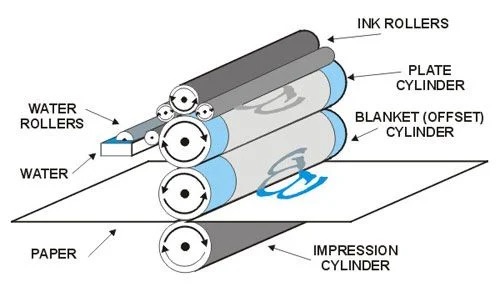
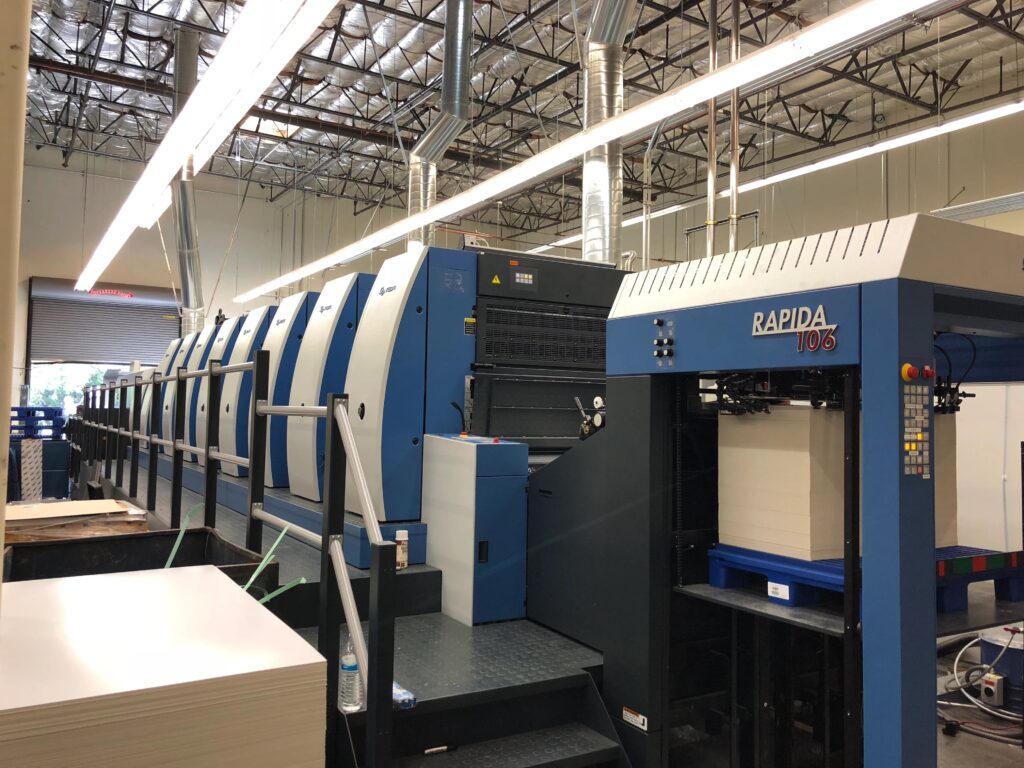
Offset lithography (sometimes referred to as litho, or just offset) is a type of planography. The process of offset printing highly relies on the principle that the ink and water do not mix. To begin, the engraved (plate) cylinder is flooded with ink and water. The water repels ink from the non-image areas, allowing for the ink to only transfer the image to the next (offset) cylinder. After being transferred to the offset cylinder, the image is then transferred to the substrate, which is pressed between the offset and an impression cylinder, to ensure the image is transferred fully.
Offset lithography is best for high volume commercial printing. Common applications of offset lithography sis: newspapers, magazines, brochures, and posters.
Flexography
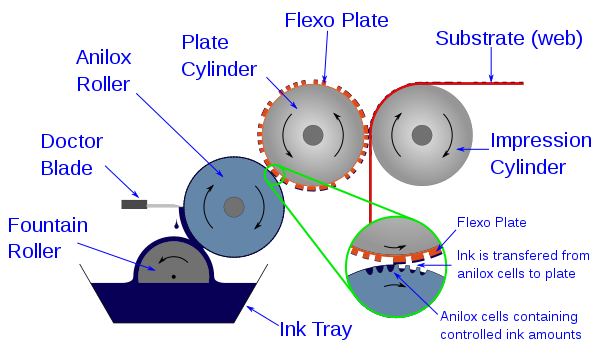
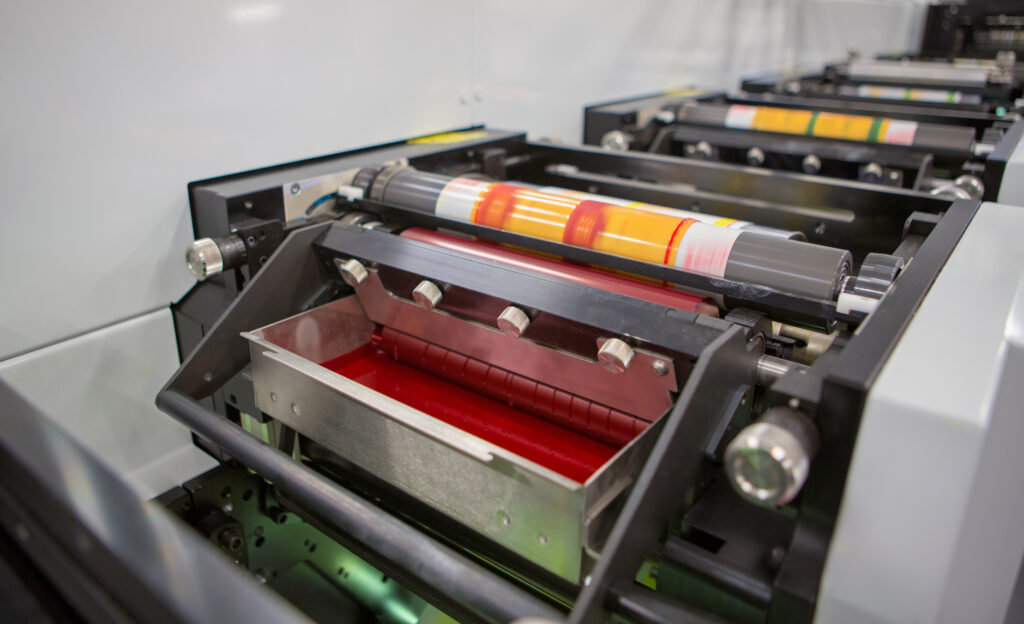
Flexography is a type of relief printing in which ink is applied to a substrate through rubber printing plates. For flexography, the desired design is engraved onto a flexible rubber plate. The engraved plate then has ink transferred to its raised edges from a separate roller. The engraved plate then transfers the ink, only from the raised areas, to a letterpress cylinder, which then transfers the design to the substrate.
Flexography is a type of printing typically used for flexible food packaging and labels. The ink is fast drying and is safe for use on packaging that comes directly in contact with food. It is also great when it comes to printing continuous patterns, like wrapping paper and wallpaper.
Digital
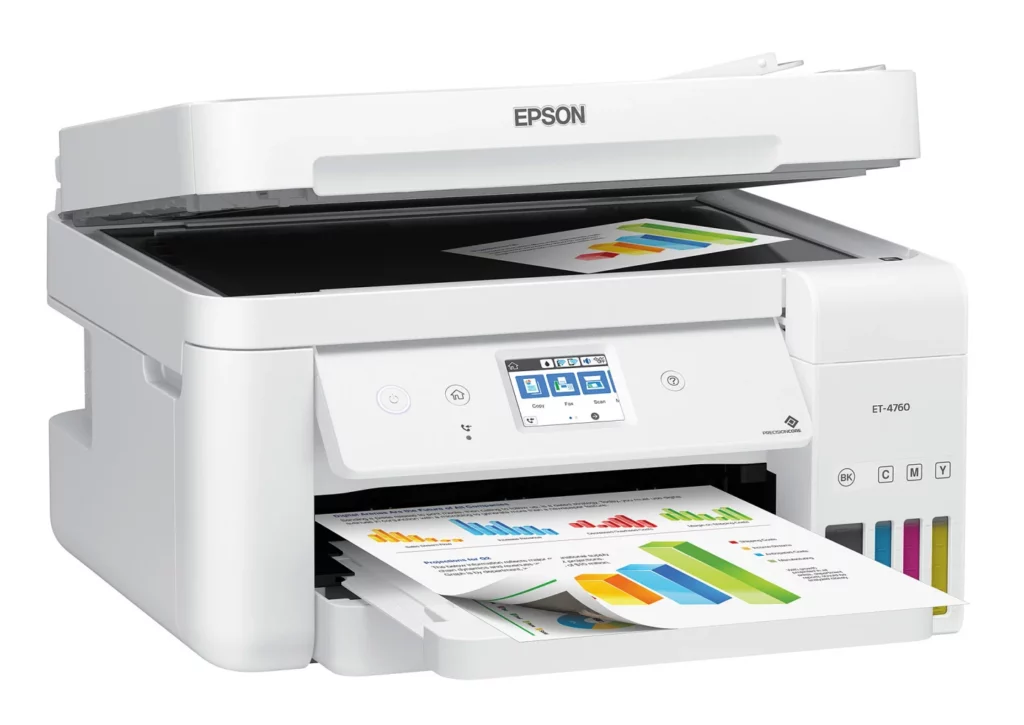
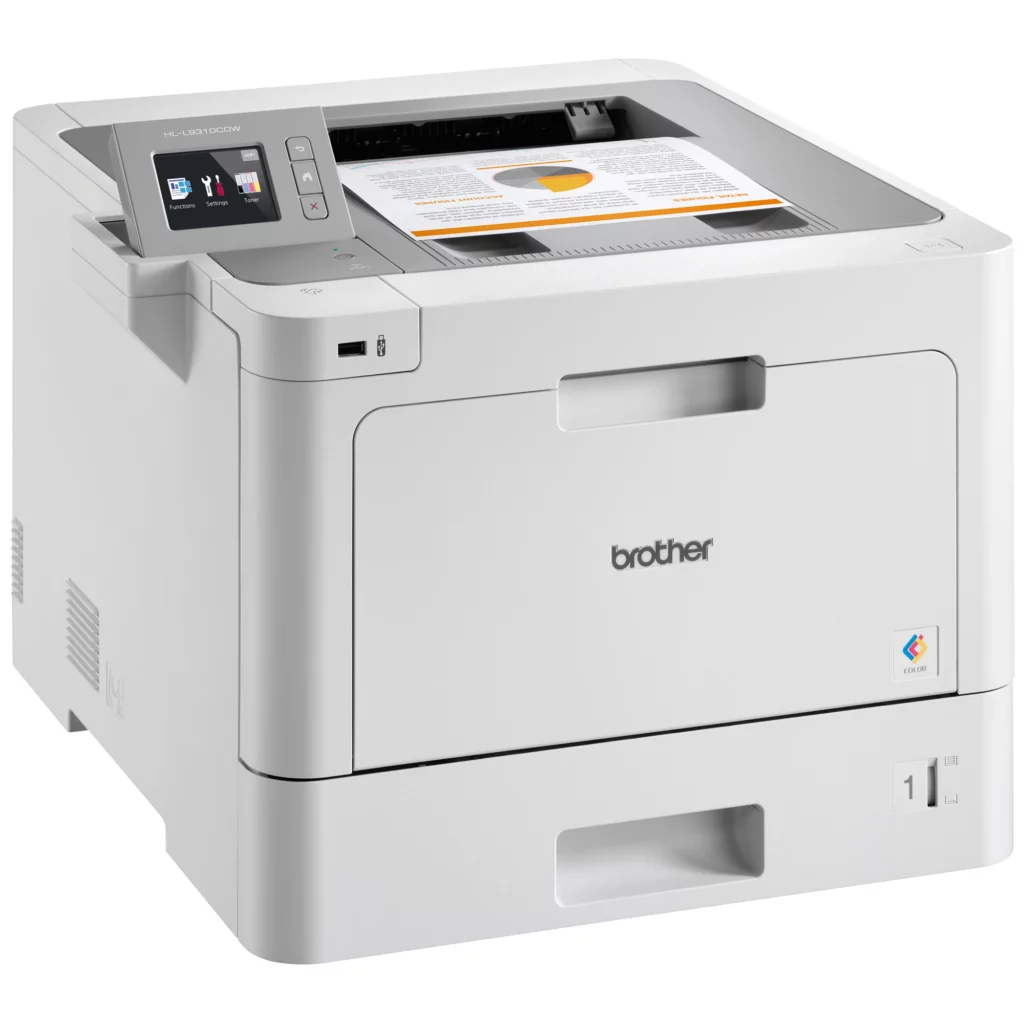
Digital printing is a modern printing method, it can be done in the forms of laser or inkjet printing
Inkjet
In inkjet printing, the printing head has tiny nozzles also called jets. As the substrate moves past the print head, ink is sprayed from the jets, creating the image. Inkjet printing utilizes the traditional ink cartridges. Inkjet printers can print on a number of substrates, such as paper, cardboard, plastic, and fabric.
Laser
Laser printing utilizes a beam of light (laser), a drum, and toner. The drum is exposed to the laser, which forms the image onto the drum. The drum with the lasered image is then exposed to the toner, which is attracted to the lasered image. That image is then transferred to the substrate from the lasered and toner covered drum. Towards the end of the printing process, the toner on the substrate is melted and fused to the substrate. This is why paper out of a laser printer feels warm just after printing.
Screen
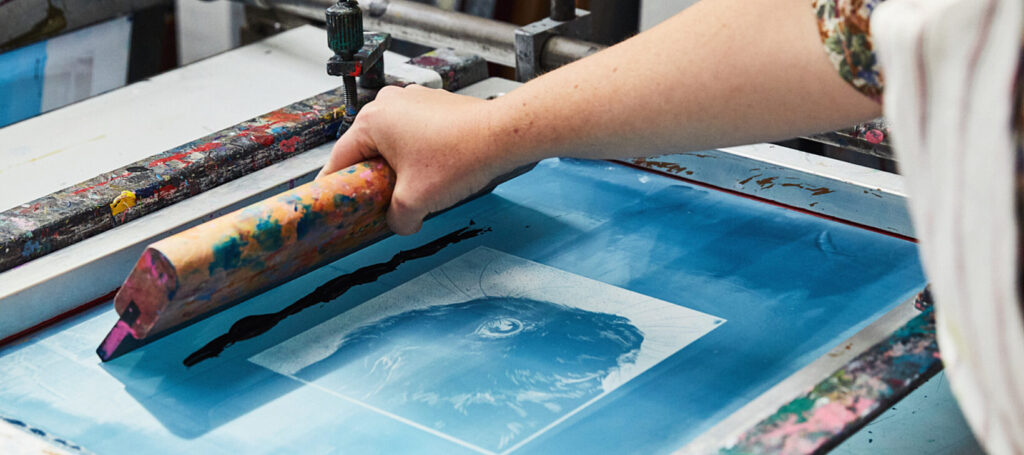
Screen printing is a stencil printing process, which involves transferring a stenciled design to a flat substrate, with ink, a mesh screen, and a squeegee. To begin, the screen is covered in emulsion. The screen then has a film positive (of the design) placed on it, then burned with UV light. The emulsion is burned where the image lies, allowing for the mesh (and therefore the design) to be exposed. The screen is then placed at the printing press, and the substrate is laid flat on the printing board. Ink is then pressed through the screen onto the item with a squeegee.
Screen printing is a type of printing often known for done on clothing garments and fabrics. Though, screen printing can slo be done on plastic, metal, glass, or wood.
Engraving
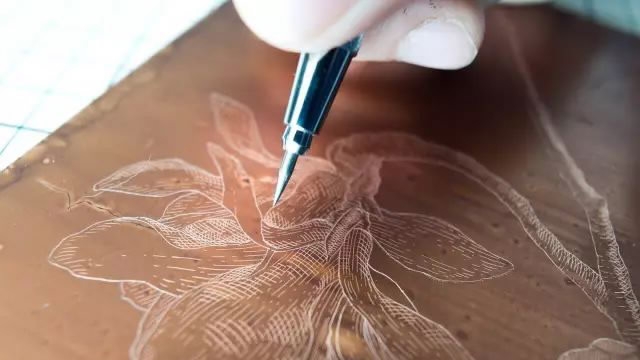

Engraving is a, intaglio (recessed) type of printing process. An image is etched into a metal plate, typically made of copper or steel. The plate is then polished to ensure there are no other imperfections in the plate, other than the engraved design. The engraved parts of the plate are then flooded with ink. The substrate is then placed on top of the metal plate, and pushed through the press, allowing for only the inked engravings to leave an impression.
Engraving was a very popular printing method in the 15th century. Today, it is used mostly for printing, money, checks, and other security sensitive items. Since engraving can create many small details, it is often hard to replicate, hence its use for high security items.
UV Printing
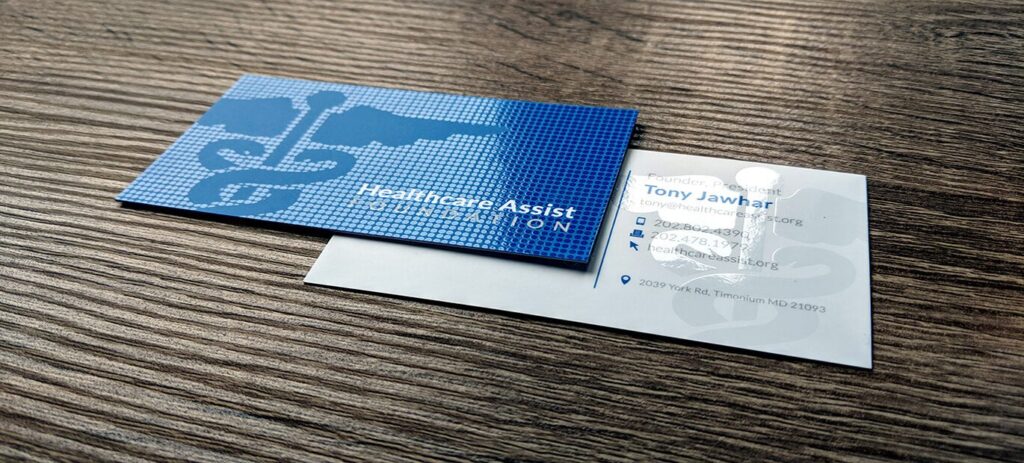
UV printing is a digital printing technique that utilizes UV curing ink to print on a range of substrates. Rather than traditional inks, UV printing uses UV inks. The printer distributes ink onto the paper, then is immediately cured with a UV light. Compared to traditional inks, UV ink has a more vibrant finish. UV can be printed on multiple substrates, from wood, to glass, to metal.
UV spot printing is a popular method for coating printed products with a varnish. In UV spot printing, varnish is placed onto a printed material and this is then cured using UV light, to create a clear, shiny layer. You may often see this on business cards or packaging that have a glossy layer over some areas.
Foil Stamping
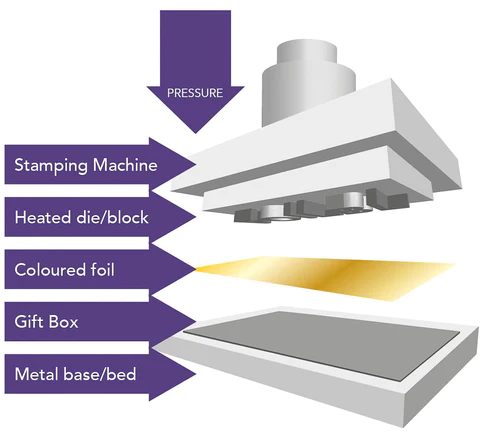

Foil stamping is a printing process that adds a foil impression into a printed piece. To begin the process, a metal die of the desired design is created. The metal die is then heated, then pressed on top of the substrate and foil material. The heat allows for the metal to fuse to the paper in the shape of the design. Foil stamping is often used on things like business stationary, invitations, packaging, and can help certain elements stand out.
Die Cutting
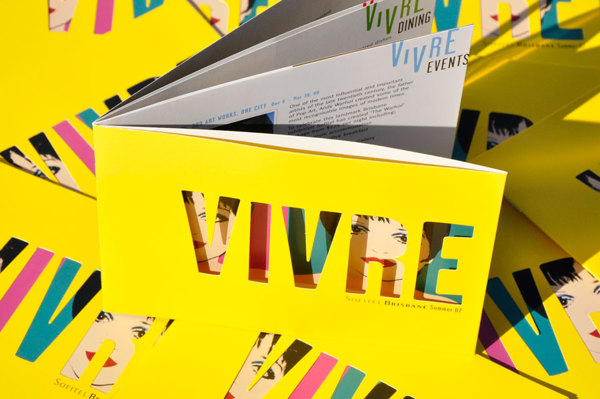
Die cutting is more a cutting process than a printing process. Die cuts are used to create custom shapes and designs. The process begins with a die, which is a special piece of metal used to cut a specific shape out of a substrate. It is similar to a cookie cutter, the cookie cutter being the die and the cookie dough being the substrate.
When it comes to the cutting process there are typically two processes: flatbed cutting and rotary/semi rotary cutting. Flatbed die cutters use hydraulics to press the die down on the substrate. This is typically best for low volume and larger sized products. Rotary and semi rotary cutting utilizes webs of substrate, allowing for higher volumes of product to be produced.